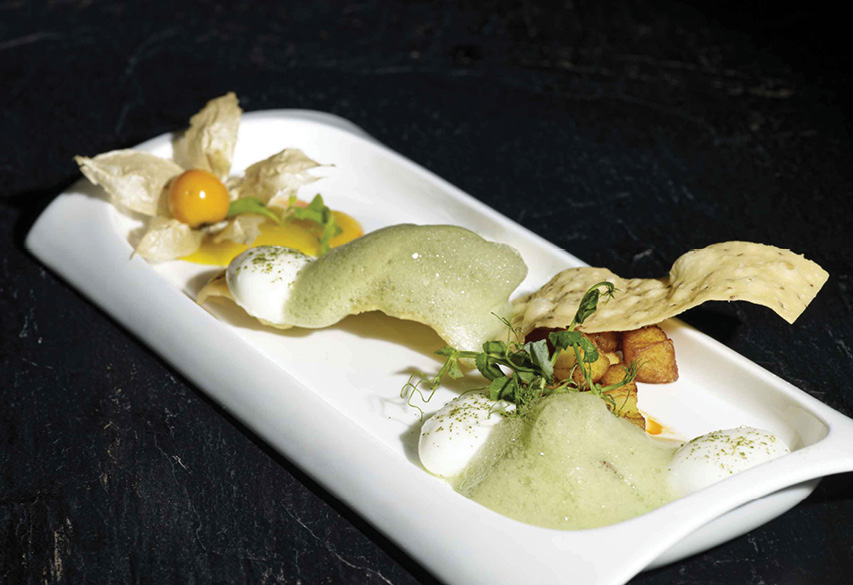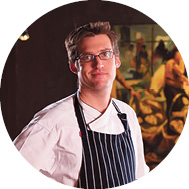From Top Tables to Michelin, here's what it takes to win restaurant awards
Top Tables 2017 lists Bangkok’s top 100 restaurants. But there’s another guide on foodie lips right now: Michelin. Here, we look at what it takes to win.
When a Singaporean talk show host asked Marco Pierre-White what he thought about Michelin giving stars to hawker stalls in Dec 2016, the legendarily fiery British chef let rip in typically dandyish style while reposed on a restaurant banquette: “Is it worth a star, the Michelin hawker? Are there another 10 hawkers who cook food as well?” he questioned the Channel News Asia reporter. “Then there should be 10 hawkers with Michelin stars… Michelin has done them a disservice by not giving all of them a star.”
Now, it’s Bangkok’s turn to have a pop at all the ways Michelin will go wrong in celebrating this city’s food scene, when the dining guide arrives here at the end of 2017 with a full Tourism Authority of Thailand-sponsorship deal inked out. The TAT is banking big on turning Bangkok into a culinary capital of the world not just for its amazing street-food culture, but also for fine dining. Early signs show that its efforts are working. Its past two-year support of Asia’s 50 Best Restaurants has resulted in nine of 2017’s top 50 being in Bangkok, up from four in 2016. And they’re not stopping there. TAT is also a title sponsor of BK’s own Top Tables for the first time this year, while the arrival of Bangkok’s Michelin guide comes with a B143.5 million cabinet-approved budget for the TAT to spend on promoting it.

But like Pierre-White, many chefs and restaurant pundits in Bangkok have met the news of Michelin’s arrival with derision. First up was chef Dylan Jones of Bo.lan, who in an online interview with Voice TV laid into how well an international panel of restaurant critics can judge Thai food. “I feel that they [Michelin] don’t have a good base in Asia and there is a different dining culture here from what they are used to working with,” Jones, an Australian who has run Bo.lan with his partner Bo Songvisava since 2009, explained in Thai. “I don’t think bringing Michelin here is crucial for boosting Thailand’s tourism or improving the food industry.”
But not everyone is naysaying on Michelin. Mason Florence, one of the six Asia-based academy chairs for Asia’s 50 Best, sees positives in the Michelin approach that might be lacking from 50 Best’s more personal voting method, which asks some 318 “food experts” to vote for their seven best personal dining experiences over the past 18 months, regardless of the caliber of the restaurant. “You can vote for your neighborhood local, a three-Michelin-starred legend or any run-down hole-in-the-wall with great food,” he said. “On the contrary, with Michelin the criteria is generally more set on formal, fine dining. One upshot with Michelin not being limited to a set number of restaurants in any one city is that they can acknowledge and feature more deserving restaurants that for one reason or another have not found their way onto Asia’s 50 Best.”
BK’s Top Tables (which comes out on Mar 31 with this issue) operates quite differently. Its target is Bangkokians, unlike Michelin and Asia’s 50 Best’s global audience, and is made by people living here who eat out in Bangkok all the time. “Yeah, Michelin is competition, but it will be interesting to see which of the two guides people living in Bangkok feel closest to,” said BK’s editor-in-chief, Gregoire Glachant, who launched Top Tables as a standalone guide in 2010. “In a sense Top Tables is a reflection of what Bangkok thinks. Michelin is interesting because it will give an outside look. I’m hugely positive about it. First of all it’s money well spent. Anyone moaning about that B143 million… just remember how much Sukhumbhand spent on that stupid light show! We are going to make that B143 million back several times over. We’ve seen how smart TAT was inviting Asia’s 50 Best Awards to Bangkok—the number of Bangkok restaurants on that list has doubled in a year.”

We caught up with Dylan Jones recently, not long after Bo.lan made its 2017 reappearance on Asia’s 50 Best list (no. 19) after dropping off completely in 2016. He expanded on how the international attention brought on by restaurant awards affects his business. “Winning awards is great, obviously, but also it’s a double-edged sword,” he explained. “It’s fantastic to be recognized by industry peers and people we respect but also being on that list made a massive change in our clientele. It’s great for driving interest but not necessarily all the people come with a full understanding of what we do, which can be frustrating, frankly. The year before we were still fully booked and it was nice. The customers wanted to be here and knew what to expect and we worked hard to meet those expectations, whereas before it was like people were ticking a box.”
You’d be hard pressed to find other chefs so indifferent to the recognition which awards bring. Thitid Tassanakajohn's Le Du placed on Asia’s 50 Best for the first time in 2017, at the no. 37 spot. For him, that position is a point of massive pride. “We always had this as a goal of ours since we started,” explained the chef. “We were aiming for this—for myself and for the team. We talked three years ago about these awards and how we were going to achieve it. We have seen more customers already.”
Making a list like Asia’s 50 Best brings a restaurant the kind of marketing which no other PR drive could ever come close to. A targeted Google search just for “Asia’s 50 Best 2017” brings back over 37,000 different results. For Pavida Chitprasertsuk, marketing manager at the Water Library group (whose portfolio includes Water Library Chamchuri, Seed and Hong Bao), it’s impossible to find that kind of exposure without winning awards: “If you have a choice between 10 restaurants to go to and all things look equal but one has the award, I’m pretty sure 90 percent of customers will choose the one with the award,” she said. “It stands out. It’s like a ticket that opens your restaurant up to a bigger pool of customers and reaches out to international media. That’s something I know a lot of restaurants need.”

But here’s the thing: often it’s the restaurants which most want to win awards who are the ones least likely to succeed. Singaporean restaurant consultant Vivian Pei has worked in Singapore’s F&B scene for 12 years, and has seen which restaurants do and don’t get recognized by the guide. “I could try and maximize my own revenue by saying we can help your restaurant get a star,” she explained. “But if someone states to me that that’s their main focus then I would say that they are in the wrong business. In the restaurant business, chasing stars is not the way to go.”
Konstantino Blokbergen, founder of Gastro-Sense, whose company consults for such culinary heavyweights as Joel Robuchon at Resorts World Sentosa (proud recipient of three Michelin stars) as well as many of the dining outlets at Mandarin Oriental Bangkok, drilled down to exactly what a restaurant needs if it’s to pick up awards: “Restaurants should focus on their fundamentals—defining their brand concept, which determines clearly their food and beverage offerings. Secondly, they need to ensure that they deliver the best possible food consistently. We would also advise they work on a clear PR strategy to get the brand’s messaging out there and increase the profile and the awareness of the restaurant, especially to industry leaders and influencers.”
Through making Top Tables, BK’s staff knows how desperate some restaurants can be to make the guide, which gets its 100 finalist restaurants from an initial pool of 200. “A lot of places want to know how they can get into the guide,” said Glachant. “I explain that it’s a secret panel and that the panelists vote so there’s no way to just get into the guide. The restaurant listens patiently then asks, ‘so how can we get into the guide?’ It’s a bit scary. They feel like we should have the answer because we worked on the guide, but we don’t.”
But there’s one thing which he’s clear on: just doing good food isn’t enough. “If you look at the [Top Tables] Top 10, or even the Top 30, it’s all people who are making an effort to be unique: who go to greater lengths for their produce, who reinvent something, who dig deeper into the roots of a cuisine. You could really go through the list and I bet every restaurant would tick at least one of those boxes. There are not many places in there who just do good food with good service.”

In Bangkok, the past 12 months have raised that bar ever higher. New places ticking some or all of those boxes include Suhring, which debuts in Top Tables no. 1 spot with its inventive take on German cuisine; the guys over at 80/20 (no. 15), who have brought a fresh approach to Thai food while retaining its flavor profile; and Masato (no. 8), who jumps into Top Tables as the guide’s highest-ranking Japanese restaurant thanks to an approach to omakase that’s welcoming without diluting what makes chef-driven sushi dinners so special.
Is Bangkok a fine-dining capital of Asia yet? You bet. It already has the most restaurants in Asia’s 50 Best of any city in Asia (tied with Singapore), and now we can all look forward to disagreeing vehemently with whatever those Thai-food amateurs from France call Bangkok’s best restaurants when Michelin arrives later in the year—complete with the odd nod to our street-food-frying aunties and uncles, no doubt. But most amazingly of all, the Tourism Authority of Thailand genuinely looks like it’s pulled off its efforts to build Bangkok into a world culinary destination. And a government initiative that works is rarer than any three-Michelin-star kitchen.



